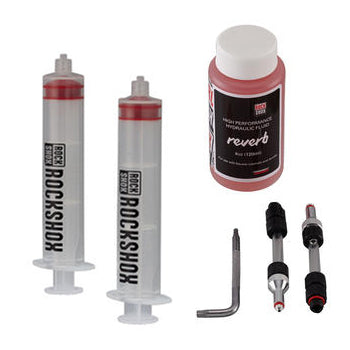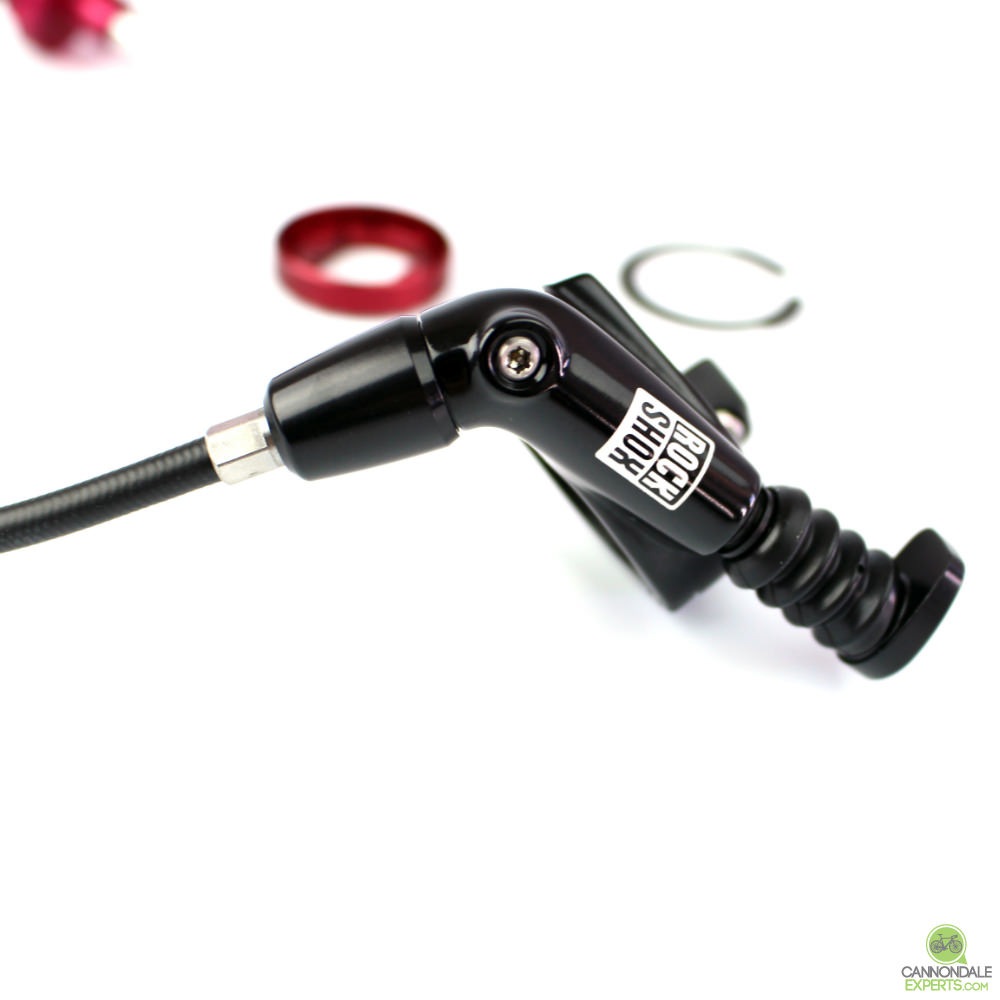

There are fewer external damper adjustments to be found on the RS-1 than with most of the competition: it sports a single knob at the bottom of the left leg to adjust rebound speed, and a handlebar mounted XLoc remote that can be used to firm up the fork on the fly.
Rockshox xloc lefty full#
Rapid Recovery is a high-speed rebound circuit that returns the wheel quickly after full impact events, while managing slower shaft speeds and mid-travel events with more damping control. RockShox's dual-stage DIG valve has been employed to keep the fork up in its travel under braking, and they've also put in their two-stage Rapid Recovery valve system. It's not a new theory by any stretch of the imagination - it's essentially what's inside of a shock's piggyback, but with a spring rather than air pressure - but it is very effective. After that, as the fork extends, the spring behind the IFP provides back pressure to keep the oil from foaming. As the fork compresses and the Accelerator's damper rod goes into the cartridge, the IFP and the spring behind it are compressed and the added displacement is possible - without it, there would need to be air in the system, and the fork wouldn't compress at all if the cartridge was simply full of oil and had no compensator. Rather than an extruded bladder that expands under compression as used in the Pike, RockShox has gone with a more conventional spring-backed internal floating piston, otherwise known as an IFP. Photo: Adrian MarcouxĮnter the Accelerator damper cartridge.

The sealed Accelerator cartridge is a big step forward from the Motion Control dampers used in RockShox's previous cross-country forks. That's all well and good, but due to weight concerns with the RS-1, RockShox decided to go a different route than to drop in their much lauded Charger damper. This layout means that there is essentially no air inside of the damper, and also back-pressure from the compensator, thereby greatly limiting the chance of the oil foaming and the fork acting unpredictably.
Rockshox xloc lefty free#
This change consists of going from the emulsion dampers ( a design where the damper oil is free to mix with air in the system) to a closed design that utilizes a compensator to, you guessed it, compensate for the volume displacement of the damper shaft entering the cartridge under compression. Note how the hub's end caps mate to the fork's dropouts, while a standard 15mm Maxle Ultimate ties everything together.ĭamper Tech - RockShox has long used different variations of their Motion Control cartridge in their SID cross-country forks, but with the advent of the Charger damper that's employed in the Pike and BoXXer forks, it's clear that they are taking a different approach to damper design. This is the key to the RS-1 coming to life: its Predictive Steering hub and axle design.

Axle: Predictive Steering w/ 15mm Maxle Ultimate.Wheel options: 29” only, with proprietary hub.External adjustments: low-speed rebound, spring pressure.Chassis: inverted, one-piece carbon upper, 32mm stanchions.All of that doesn't come without a hefty price tag, though: the $1,865 USD RS-1 has been designed with cross-country racing and trail riding in mind, and can be run in 80, 100, or 120mm travel settings depending on how you're looking to use RockShox's new 1,666 gram fork. This includes not only the lightweight, one-piece carbon fiber upper legs and steerer tube assembly that only recently became possible to manufacture, but also the proprietary Predictive Steering design that includes the fork's dropouts, the clever hub, and how the two mate together to add rigidity to the fork. Yes, there have been plenty of upside down forks over the years, and even a few single crown versions, but none have benefited from the all-encompassing approach to fork design that RockShox has put towards the RS-1. The RS-1 name may be one that some riders recognize from many years ago, but the fork itself isn't like anything else currently on the market.


 0 kommentar(er)
0 kommentar(er)
